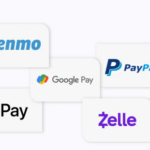What Is Strike
Strike is a DeFi lending protocol that allows users to earn interest on their cryptocurrencies by depositing them into one of several markets supported by the platform. When a user deposits tokens to a Strike market, they receive sTokens in return. These sTokens represent the individual’s stake in the pool and can be used to redeem the underlying cryptocurrency initially deposited into the pool at any time.
- What Is Strike
- Important Points Table Of Strike
- How to Buy the Strike Coin & Trade On Exchange?
- How does Strike Work?
- Who Are the Founders of Strike?
- What Makes Strike Unique?
- Supply Collateral to Strike while controlling your keys
- Access Strike through a friendly user interface
- Solution
- Access Liquidity from Strike on-demand on any asset.
- STokens
- How do sTokens earn interest?
- How is Strike Finance Secured?
- Security
For example, by depositing ETH into a pool, you will receive sETH in return. Over time, the exchange rate of these sTokens to the underlying asset increases, which means you can redeem them for more of the underlying asset than you initially put in — this is how the interest is distributed.
On the flip side, borrowers can take a secured loan from any Strike Coin pool by depositing collateral. The maximum loan-to-value (LTV) ratio varies based on the collateral asset, but currently ranges from 50 to 80%. The interest rate paid varies by borrowed asset and borrowers can face automatic liquidation if their collateral falls below a specific maintenance threshold.
Important Points Table Of Strike
| Basic | Points |
|---|---|
| Coin Name | Strike |
| Short Name | STRK |
| Max Supply | 6,540,888 |
| Explorer | Click Here To View |
| Chat | Click Here To Chat |
| Website | Click Here To Visit |
How to Buy the Strike Coin & Trade On Exchange?
How does Strike Work?
Strike enables users and developers to supply digital assets onto the platform to earn from dyanmic rates provided by the protocol and use that supplied asset as collateral to borrow other supported digital assets all on-chain.
Who Are the Founders of Strike?
Strike is a decentralized finance platform that was launched by Spend.com. There are no team supplies or founder supplies and the protocol will be operated by the community and be fully decentralized.
What Makes Strike Unique?
According to Strike Coin , since the token distribution does not consist of any venture capital, shareholder, founder/advisor token distributions, it maintains the highest level of community distribution. The plans to offer a mechanism called “Governors” who can white list tokens to be added quickly to the market making it a scalable DeFi platform.
The community governance sets it apart from other similar protocols. Holders of the platform’s native governance token — STRK — can propose changes to the protocol, debate and vote whether to implement changes suggested by others — without any involvement from the team. This can include choosing which cryptocurrencies to add support for, adjusting collateralization factors, and making changes to how STRK tokens are distributed.
These STRK Tokens can be bought from third-party exchanges or can be earned by interacting with the Strike protocol, such as by depositing assets or taking out a loan.
Supply Collateral to Strike while controlling your keys
Strike users control all of their digital assets on a non-custodial protocol while earning a variable rate based on market demands of that asset. Rates are earned per Ethereum block mined.
Access Strike through a friendly user interface
The Strike Cryptocurrency App enables users access to a fully decentralized money market powered on Ethereum 24/7/365 with a user-interface, api, or smart contracts.
Solution
Build your own custom application by accessing a non-custodial moneymarket with the developer APIs and SDKs. This will enable developersto quickly build their own application tailored to fit the Strike protocol.
Access Liquidity from Strike on-demand on any asset.
With the Strike Coin protocols decentralized nature, users and developers can access liquidity on-demand from their supplied collateral.
STokens
Each asset supported by the Protocol is integrated through a sToken contract, which is an EIP-20 compliant representation of balances supplied to the protocol. By minting sTokens, users (1) earn interest through the sToken’s exchange rate, which increases in value relative to the underlying asset, and (2) gain the ability to use sTokens as collateral.
sTokens are the primary means of interacting with the Strike Protocol; when a user mints, redeems, borrows, repays a borrow, liquidates a borrow, or transfers sTokens, she will do so using the sToken contract.
There are currently two types of sTokens: SErc20 and SEther. Though both types expose the EIP-20 interface, SErc20 wraps an underlying ERC-20 asset, while SEther simply wraps Ether itself. As such, the core functions which involve transferring an asset into the protocol have slightly different interfaces depending on the type, each of which is shown below.
How do sTokens earn interest?
Each market has its own Supply interest rate (APR). Interest isn’t distributed; instead, simply by holding sTokens, you’ll earn interest.
sTokens accumulates interest through their exchange rate — over time, each sToken becomes convertible into an increasing amount of it’s underlying asset, even while the number of sTokens in your wallet stays the same.
How is Strike Finance Secured?
Everything on Strike Coin is handled automatically by smart contracts, which act to mint sTokens after Ethereum and ERC20 assets are deposited, and allow users to redeem their stake using their sTokens.
The protocol enforces a collateralization factor for all assets supported by the platform, ensuring each pool is overcollateralized at all times. If the collateral falls below the minimum maintenance level, it will be sold to liquidators at a 10% discount, paying down some of the loan and returning the remainder to an acceptable collateralization factor.
This arrangement helps to ensure borrowers maintain their collateral levels, provides a safety net for lenders, and creates an earning opportunity for liquidators.
Security
The security of the Strike protocol is highest priority; the development team, alongside third-party auditors and consultants, has invested considerable effort to create a protocol that they believe is safe and dependable. All contract code and balances are publicly verifiable, and security researchers are eligible for a bug bounty for reporting undiscovered vulnerabilities. They believe that size, visibility, and time are the true test for the security of a smart contract; please exercise caution, and make your own determination of security and suitability.








